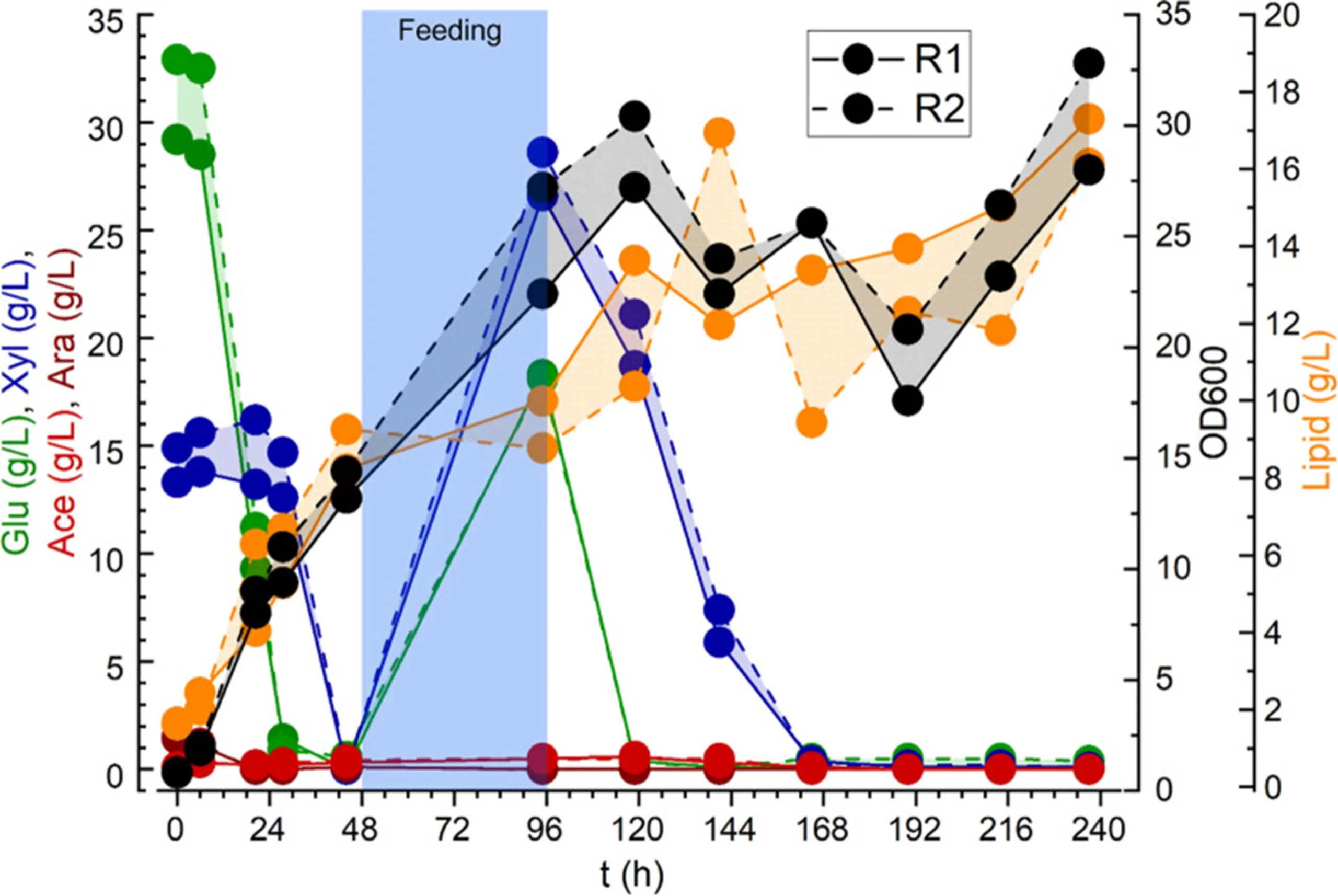Tolerance of Engineered Rhodosporidium toruloides to Sorghum Hydrolysates During Batch and Fed-Batch Lipid Production
Themes: Conversion
Keywords: Hydrolysate, Lipidomics
Citation
Woodruff, W., Deshavath, N.N., Susanto, V., Rao, C.V., Singh, V. Nov. 29, 2023. Data from: “Tolerance of Engineered Rhodosporidium toruloides to Sorghum Hydrolysates During Batch and Fed-Batch Lipid Production.” University of Illinois Urbana-Champaign. DOI: 10.13012/B2IDB-6698788_V1.
Overview

Oleaginous yeasts are a promising candidate for the sustainable conversion of lignocellulosic feedstocks into fuels and chemicals, but their growth on these substrates can be inhibited as a result of upstream pretreatment and enzymatic hydrolysis conditions. Previous studies indicate a high citrate buffer concentration during hydrolysis inhibits downstream cell growth and ethanol fermentation in Saccharomyces cerevisiae. In this study, an engineered Rhodosporidium toruloides strain with enhanced lipid accumulation was grown on sorghum hydrolysate with high and low citrate buffer concentrations.
Both hydrolysis conditions resulted in similar sugar recovery rates and concentrations. No significant differences in cell growth, sugar utilization rates, or lipid production rates were observed between the two citrate buffer conditions during batch fermentation of R. toruloides. Under fed-batch growth on low-citrate hydrolysate a lipid titer of 16.7 g/L was obtained.
Citrate buffer was not found to inhibit growth or lipid production in this engineered R. toruloides strain, nor did reducing the citrate buffer concentration negatively affect sugar yields in the hydrolysate. As this process is scaled-up, $131 per ton of hydrothermally pretreated biomass can be saved by use of the lower citrate buffer concentration during enzymatic hydrolysis.
Data
Illinois Data Bank includes:
- Elemental abundance
- Hydrolysate composition
- Sugar utilization/lipid production rates